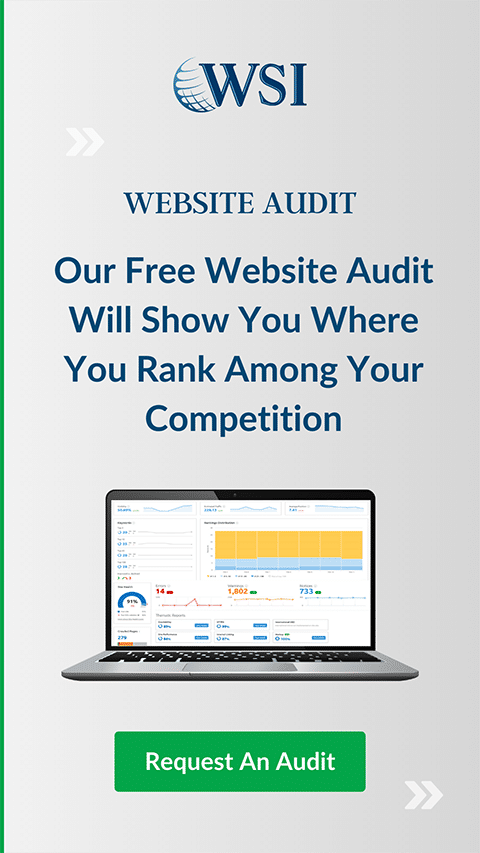
Summary: Google Analytics 4 is the new release from Google, intended to replace their Universal Analytics tool. Learn what this means for you and how you can prepare for it.
Google’s Universal Analytics tool has served the marketing community well over the years, but its time has finally come. Google has recently announced that the tool will no longer process new data after specific dates in 2023. This means that marketers with active campaigns will have no choice but to transition to the new Google Analytics 4 tool.
How can you prepare for this upcoming change? Learn more about what Google Analytics 4 is, what it can do, and how you can get your business set up to use it successfully in the post below.
Google Is Retiring Universal Analytics in 2023
According to Google, Universal Analytics will no longer be available to process new data after July 1, 2023. Universal Analytics 360 (the enterprise-grade version of Universal Analytics that offers additional processing power, support options, and a few additional features for an annual fee) will continue to process new data for a few more months after this date. However, this version will also stop working on October 1, 2023.
There will be no way to use Universal Analytics to access and analyze new data past these dates. Marketers who still want to use Google Analytics in campaigns will have no choice but to use the newer version of the tool, Google Analytics 4.
What Is Google Analytics 4?
Google Analytics 4 (GA4) is the latest version of Google’s marketing data analytics tool. It is intended to replace the old version, Universal Analytics.
This new Analytics tool was built to reflect changing consumer privacy expectations across North America and the European Union. News laws like the EU’s privacy regulation and Canada’s Consumer Privacy Protection Act have made it difficult for marketers to continue relying on old metrics to gauge the success of their campaigns. GA4 does not use third-party cookies or any other controversial sources of user data. Instead, it is powered by first-party data that is collected with the user’s knowledge and consent. This makes it a future-proof solution for companies who want to continue their marketing activities with minimal future disruption for compliance purposes.
Google Analytics 4 has also been augmented with next-generation AI capabilities. With these features, the tool can automatically synthesize data and deliver insights that make it easy to grow your audience and capitalize on revenue-making opportunities. This added predictive power easily makes up for the loss of the contextual data that third-party cookies once provided.
What are the Benefits of Google Analytics 4?
Universal Analytics will still be around for a while but do not mistake this as a reason to delay the transition to GA4. Using the new tool will get you access to a range of valuable benefits, including:
- Cross-Platform Tracking. Unlike Universal Analytics’ site-specific tracking, GA4 supports consumer data tracking across multiple platforms using unique user IDs. This creates a connected ecosystem of lead data where results can be attributed to all contributing aspects of your marketing activities.
- Measurements Formatted as Events. Google Analytics 4 stores all interactions that users have with your website as separate events. This allows you to do deep dives into your data and investigate how individual users behave during sessions on your site. You can use this information to refine your marketing approach based on real-world outcomes.
- Predictive Metrics Based on AI Insights. One of GA4s most anticipated improvements is the ability to use AI technology to augment marketing insights. Using machine learning techniques, this tool can provide metrics like churn probability, purchase probability, and revenue prediction for each lead. You can use this data to allocate your ad spending more efficiently, targeting users who will provide the best ROI.
- Increased Control. GA4 was built with flexibility in mind and makes it easier than ever to leverage your data to achieve your business goals. Its dashboard is fully customizable and can incorporate custom visual data displays to help you arrange your data in whichever way makes the most sense for your needs. The abundance of new data the tool provides also allows for more targeted marketing tactics, including greater audience segmentation.
Google Analytics 4 Is the New Standard
Still not convinced that you need to begin the switch to GA4 as soon as possible? Remember that the new tool is poised to become the new industry standard. Some of the key trendsetting features that GA4 provides include:
- Insights Across Touchpoints. GA4 synthesizes consumer data from many different sources, including repeat browsing sessions and time spent engaging with your business through apps. This gives you a better picture of where each lead really is in the sales cycle.
- Data-Driven Attribution. While Universal Analytics was only able to attribute conversions to users’ last click, GA4 assigns attribution credit to every relevant interaction your users have with your digital marketing materials. This allows you to see which digital marketing services and activities are contributing to your sales goals and which need refinement to improve their performance.
- More Valuable Data. GA4’s machine learning features allow it to provide you with data you could not get from other sources, including in-depth insights on user behaviour and conversion likelihood. This information opens up new possibilities for audience segmentation and other lead nurturing tactics.
- More Actionable Data. GA4 is integrated with a range of other Google products (most notably Google Ads). This allows you to quickly apply insights from GA4 to your real-world marketing campaigns, removing some of the barriers that may have made it difficult for you to put your analytics to use in the past.
- Enterprise-Grade Solutions. GA4 was built with commercial needs in mind. It can organize and analyze large amounts of consumer data without violating any of the privacy laws to which businesses are bound.
How Can I Start Preparing?
To make the most of your marketing opportunities, you will need to be proficient with GA4 by the time Universal Analytics is phased out. Put the following tips into practice to ensure that your business is ready when the time comes.
- Turn On Your GA4 Properties Immediately. G4A will not pull data from apps and browsers retroactively, so activate the tool as soon as possible to maximize the amount of data you can collect.
- Transfer Relevant Information from Universal Analytics to GA4. Filters, views, goals, and other key information can all be copied over to GA4. Do this to maintain consistency within your active campaigns.
- Set Up Proper Source Attribution. GA4’s advanced conversion tracking features have immense marketing potential, but they are only useful if you have configured your source attribution data properly. Get this done right away to improve the scope of your analytics.
- Hire a Digital Marketing Company to Help. At WSI Comandix, we have already set up GA4 tracking for all of our clients as part of our digital marketing services. This means that the companies we work with can rest assured that their campaigns will benefit from the full potential of GA4.
Frequently Asked Questions
What Is Google Analytics 4?
Google Analytics 4 is the latest version of Google’s marketing analytics tool. It is replacing the Universal Analytics tool that was previously used to perform similar marketing tasks.
What Is the Difference Between Google Analytics 4 and the Old GA?
Google Analytics 4 was developed to give consumers more privacy than previous analytics tools while still offering superior marketing insights. This ensures that the tool remains compliant with evolving privacy laws from around the world. It also incorporates new technologies that were not viable when Universal Analytics was released, such as machine learning and AI.
Is Google Analytics 4 Free?
Yes, Google Analytics 4 is free to use. You will never have to pay a fee to access data from this tool. In the future, Google may release another version of GA4 that offers additional support like Universal Analytics 360 did. However, this has not been confirmed and will likely not affect existing GA4 users when it happens.
Are They Getting Rid of the Old Google Analytics?
Yes. The previous version of Google Analytics will no longer process new data after either July 1st (standard version) or October 1st (360 version). The old tool may still be accessible after this time, but users will only be able to use it to view historical data. Eventually, Google may remove the ability to access it altogether.
If you want to keep any data, custom filters, segmentation information, or other details from your Universal Analytics account, be sure to copy that data over to the new system as soon as possible.
Get to Work Preparing for GA4 Today

Transitioning to Google Analytics 4 may seem overwhelming, but the sooner you do it, the easier and more beneficial it will be. Our tips should help you get a head start on the matter, giving you the chance to build your skills early and get ahead of your competition. If you are still not sure how to make this tool work for your business’ marketing needs, contact WSI Comandix. The staff at our digital marketing agency are already working with GA4 on a daily basis and would be pleased to help you navigate this indispensable new tool.
Don't stop the learning now!
Here are some other blog posts you may be interested in.
VIEW ALL BLOG POSTS-
What Does a Digital Marketing Agency Do?
You probably spend a few hours every week online, searching for information, browsing through online stores, engaging with content on social media and …
READ MORE -
The Future of Post-Pandemic Marketing: 5 Predictions for 2021
Well…this post is going to be a little different than in previous years, isn’t it? I guess that’s true of most things in 2020, so it’s no longer surprising …
READ MORE -
Is Your Website AODA Compliant?
If you run a medium to large-sized business or non-profit in Ontario, you have a major deadline coming up. All Ontario businesses with more than …
READ MORE









